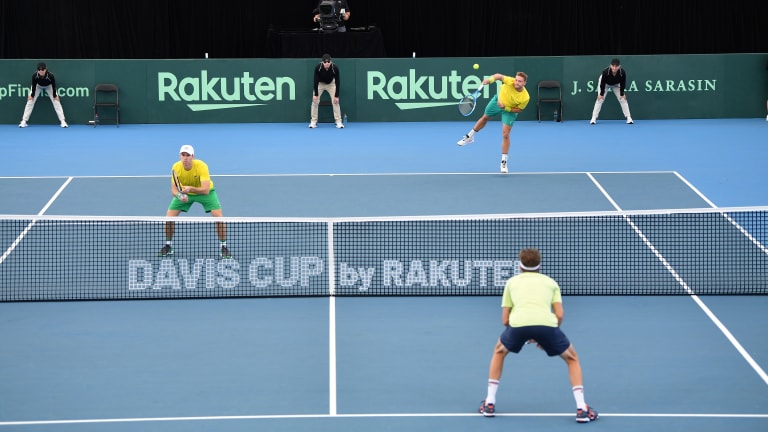Few situations in tennis are more intimidating than facing a strong serve-and-volleyer. In doubles, that means two players will be at the net. It’s the most desirable position for a team to be in.
How can you combat the serve-and-volley and have more success breaking serve? Here are five tips to turn the tables in doubles.
1
GET LOW
When the server stays at the baseline, your goal is to hit your return deep. But when facing a net-rushing opponent, your goal is to hit the ball at their feet. Aim your return to the far-wide corner of their service box to ensure a low and difficult first volley.
2
TAKE TIME AWAY
Stand close to the baseline and block the return, hitting it more like a volley instead of taking a full swing. Returning inside the court gives your opponents even less time to get to the net. If you’re able to, follow your return to the net, which improves your court position and takes an advantage away from your opponents.
